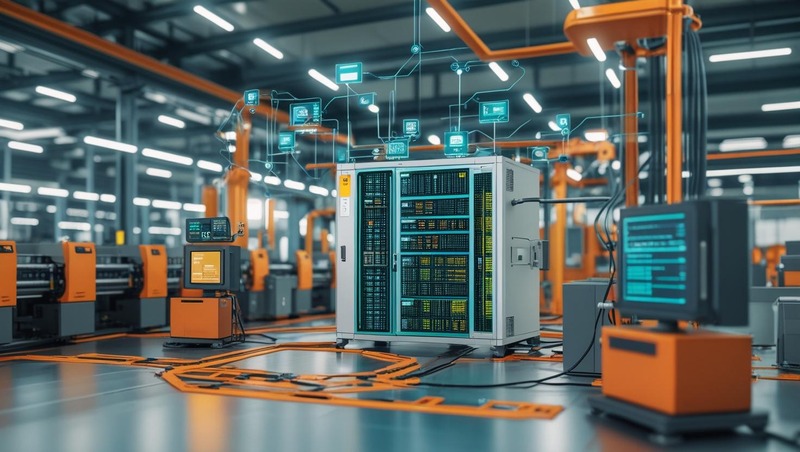Edge AI is rapidly redefining the landscape of industrial automation in North America, marking a shift from centralized processing to intelligent, on-device decision-making. As industries seek to harness real-time insights, reduce latency, and operate more autonomously, the integration of artificial intelligence (AI) at the edge is proving to be a game-changer. In sectors such as manufacturing, energy, automotive, and logistics, Edge AI is driving smarter operations, boosting productivity, and unlocking new business models—making it a pivotal force in North America’s industrial evolution.
One of the core advantages of Edge AI is its ability to process vast amounts of data locally, at the point of origin, without the need to send information to the cloud. This local intelligence enables instant decision-making, which is critical in industrial settings where milliseconds matter. In high-speed production lines or autonomous systems, AI-powered edge devices can detect anomalies, trigger alerts, and take corrective actions in real time, drastically improving efficiency and safety.
Download PDF Brochure @ https://www.marketsandmarkets.com/pdfdownloadNew.asp?id=195348761

North American manufacturers are increasingly adopting Edge AI to enable predictive maintenance, one of the most impactful applications in industrial environments. By combining sensor data with machine learning algorithms at the edge, these systems can forecast equipment failures before they occur, reducing costly downtime and extending asset lifespans. This approach not only enhances operational reliability but also reduces maintenance costs and increases overall equipment effectiveness (OEE).
Computer vision at the edge is another fast-growing application area, especially in quality control and robotic automation. AI-enabled vision systems deployed on the factory floor can inspect products, detect defects, and classify items without needing cloud processing. These systems are improving accuracy, reducing waste, and enabling zero-defect manufacturing in industries like electronics, pharmaceuticals, and automotive. The ability to run vision algorithms locally also ensures privacy, security, and uninterrupted operations even in low-connectivity environments.
North America’s robust 5G infrastructure and growing investments in smart manufacturing are accelerating Edge AI adoption across industrial sectors. With ultra-low latency and high data throughput, 5G supports real-time Edge AI applications such as collaborative robots, automated guided vehicles (AGVs), and remote monitoring systems. These technologies are enabling more flexible, adaptive manufacturing environments and positioning North American industries at the forefront of the Industry 4.0 revolution.
AI at the edge also supports greater cybersecurity and data sovereignty—key concerns for North American enterprises. By processing sensitive operational data locally, Edge AI reduces exposure to cyber threats and ensures compliance with regional regulations. This is especially crucial in industries like defense, energy, and healthcare, where data protection is paramount.
Looking ahead, the continued convergence of Edge AI with technologies such as digital twins, augmented reality, and blockchain will unlock new levels of industrial intelligence. Companies across North America are investing in Edge AI ecosystems, partnering with tech providers, and developing next-gen hardware and software solutions tailored to their specific operational needs.
In conclusion, AI is not only driving the growth of Edge AI in North America but also transforming it into a strategic pillar of industrial innovation. As businesses push for greater autonomy, resilience, and agility, Edge AI is enabling smarter, faster, and safer decision-making at the edge—bringing the promise of intelligent industry to life.
